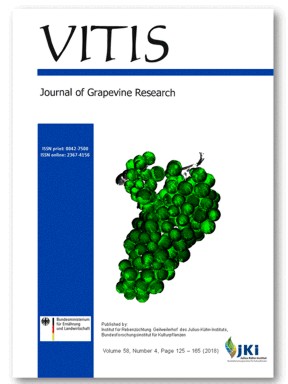Immobilisation of glycosidases from commercial preparation on magnetic beads
Part 2: Aroma enhancement in wine using immobilised glycosidases
DOI:
https://doi.org/10.5073/vitis.2018.57.129-136Keywords:
immobilisation; magnetic beads; glycosidases; magnetic separation; wine; aroma enhancement; enzyme assay; enzyme stability; sensory analysis.Abstract
Most of the terpenes in wines are conjugated to various sugars, representing a significant reservoir of aromatic precursors. To promote the release of these terpenes, certain enzymes, such as β-glucosidase, α-arabinosidase and α-rhamnosidase, are necessary. A simple and cost-effective procedure for the immobilisation of multiple glycosidase activities (β-D-glucopyranosidase, α-L-arabinofuranosidase, α-L-rhamnopyranosidase and β-D-xylopyranosidase) from commercial Aspergillus niger preparation onto magnetic beads as carriers was developed as reported in Part 1 (Ferner et al. 2016).
The aim of this work was to analyse a possible application of this immobilised biocatalyst due to its well-known advantages over soluble enzyme preparations – that is, control of the reaction process and preparation of enzyme-free products. Volatile compounds were analysed by gas chromatography (mass spectrometric detection). After the treatment of the model wine with different glycosides and white wine with immobilised glycosidases, the amount of free terpenes was significantly increased with respect to that of the control wine.
The results of this study are of considerable interest for possible future applications of immobilised enzymes in the wine-making industry.
Downloads
Published
Issue
Section
License
The content of VITIS is published under a Creative Commons Attribution 4.0 license. Any user is free to share and adapt (remix, transform, build upon) the content as long as the original publication is attributed (authors, title, year, journal, issue, pages) and any changes to the original are clearly labeled. We do not prohibit or charge a fee for reuse of published content. The use of general descriptive names, trade names, trademarks, and so forth in any publication herein, even if not specifically indicated, does not imply that these names are not protected by the relevant laws and regulations. The submitting author agrees to these terms on behalf of all co-authors when submitting a manuscript. Please be aware that this license cannot be revoked. All authors retain the copyright on their work and are able to enter into separate, additional contractual arrangements.



